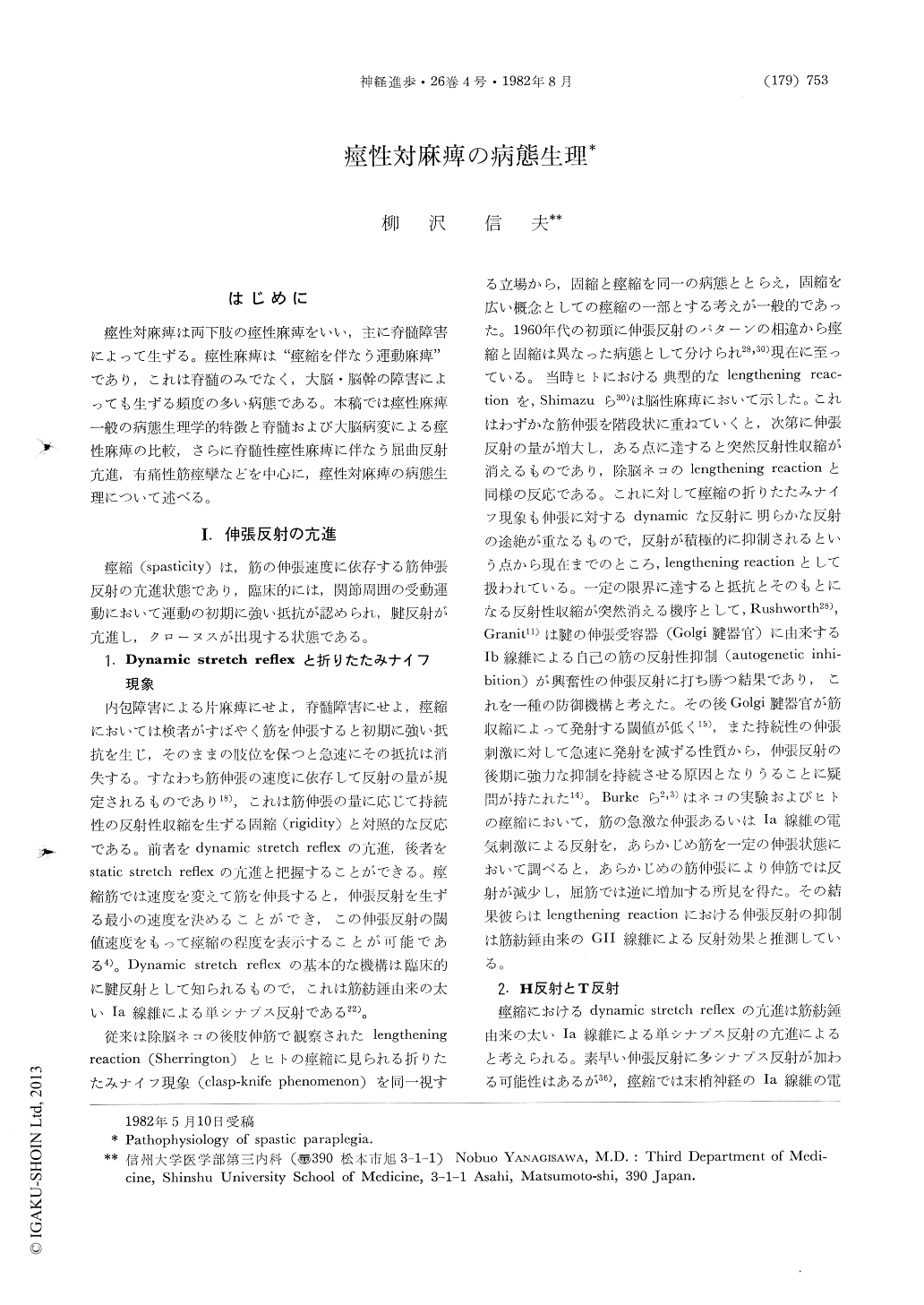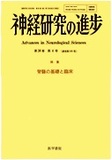Japanese
English
- 有料閲覧
- Abstract 文献概要
- 1ページ目 Look Inside
はじめに
痙性対麻痺は両下肢の痙性麻痺をいい,主に脊髄障害によって生ずる。痙性麻痺は"痙縮を伴なう運動麻痺"であり,これは脊髄のみでなく,大脳・脳幹の障害によっても生ずる頻度の多い病態である。本稿では痙性麻痺一般の病態生理学的特徴と脊髄および大脳病変による痙性麻痺の比較,さらに脊髄性痙性麻痺に伴なう屈曲反射亢進,有痛性筋痙攣などを中心に,痙性対麻痺の病態生理について述べる。
Abstract
Recent data on pathophysiology of spastic paraplegia were reviewed.
Spasticity is characterized by exaggeration of velocity-dependent dynamic stretch reflex. On clasp-knife phenomenon, which had been attributed to autogenetic inhibition by Ib fibers, recent data suggest significant role of Group II reflex activities. In spasticity, H reflex, a homologue of monosynaptic reflex by Ia fibers in animals, is exaggerated in most cases. This means an increase of excitability of alpha motoneurones or a facili-tation of Ia synaptic transmission and data exist supporting both.

Copyright © 1982, Igaku-Shoin Ltd. All rights reserved.


